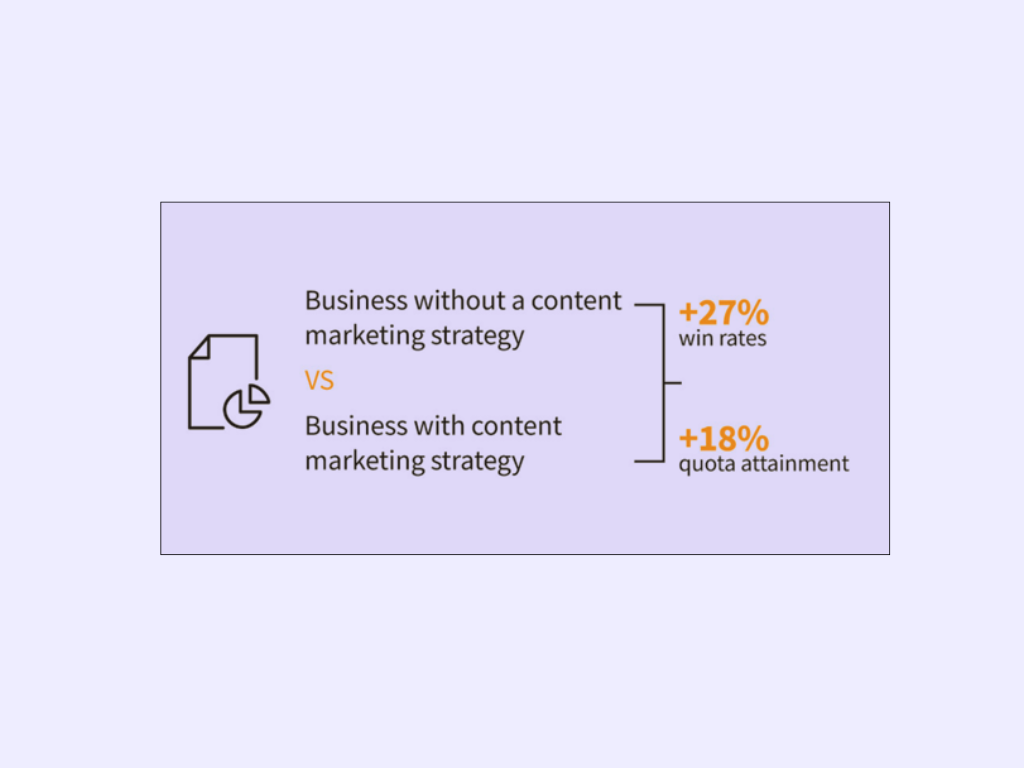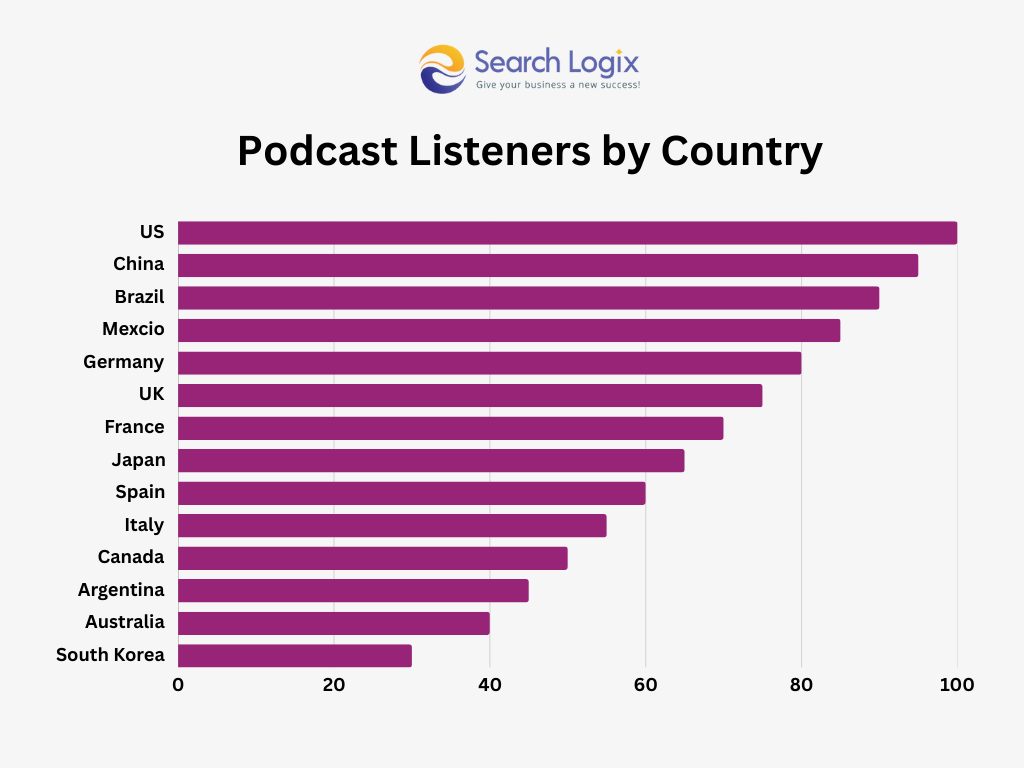Content Marketing in 2025: Key Trends and Strategies
The pace at which content marketing is growing seems to be commendable. With the advent of technologies like AI, natural language processing, and user-behavior analytics, digital content has gripped a steep pace. As we approach 2025, it will not be long until the old ways of content marketing become anachronous.
There is no longer the case where search engines could simply look at how many links pointed toward a site if a brand were able to game that metric. Now it is more about Google finding user-first, experience-oriented content of high-quality adhering to the latest algorithms and the AI-fueled search-generative experience (SGE).
This guide carries the most important changes, strategies, and tools that define content marketing in 2025. Indeed, a complete guide for marketers, business owners, and digital strategists to equip themselves with innovative ideas and actionable strategies.
Now it is about time to enter into the future of 2025 content marketing drivers.
Content Marketing Growth and Evolution in 2025
Consumer patterns have brilliantly changed through the years on content marketing-the previously avoided component becomes the premise of modernism-the stronghold of suffering in the year 2025 as such effects continue to reveal a progressive trend that adds further sophistication and depth while integrating emerging technologies.
A Historical Perspective
- Before the 2000’s: It was synonymous with traditional advertising and PR. The businesses launched a one-way communication through print, radio, and television.
- Beginning of blogging (early 2000s): It is where the emergence of such platforms invites business aside from producing content and publishing it directly to that audience. It affords another facility-another moving in a value-providing relationship construction.
- Social media boom (mid-2000s): From here, social media via Facebook, Twitter, and YouTube gave birth to a new model of content distribution that included real-time communication with the audience along with some programming designed around that channel.
- Content as a strategic asset (early 2010s): The marketing power of content in driving organic traffic, building brand authority, and generating leads became apparent to businesses. Thus, entire marketing plans now embraced content strategies.

- The multimedia era (mid-2010s): Video content, podcasts, and interactive experiences saw their advent. Businesses began diversifying their content formats to suit different audience interests.
- Personalization and data-driven content (late 2010s): Marketers began using data and analytics to personalize their content and strategies. AI started to join the ranks to help with content creation and distribution.
- The immersive content era (early 2020s): Augmented reality/virtual reality, interactive content, and live streaming have recently gone mainstream, presenting an immersive experience. User-generated content became even more relevant.
Content Marketing in 2025: Key Evolutions
- AI-driven personalization at scale: Hyper-personalization will be driven by AI, delivering to every user most suitable content at a real-time pace. The content serves to adapt based on emotional analysis along with live user information.
- Immersive & experiential content generalization: AR/VR content, interactive simulations, and gamified experiences are going to become mainstream, promising deeper-engagement audiences and immersion in brand.
- Semantic SEO and knowledge graph optimization: Content will be optimized for semantic search and knowledge graphs, looking at the meaning and context of the information it contains, as well as the keywords.
- Decentralized content ecosystems: Blockchain and Web3 will allow for the distribution and monetization of content, keeping creators as key influences in the ecosystem where the community owns the resources.

- The rise of synthetic media: AI-enabled generation of media such as virtual influencers and synthetic voices will become more sophisticated, creating a clear distinction between humankind and AI-made content.
- Multimodal content consumption: This implies that content will flow across formats and devices, warranting the need for marketers to create adaptable and accessible content experiences.
- Hyper-local and contextual content: Content should be hyper-personalized and context-specific, considering precise geo-locations, demographics, and real-time user requirements.
- Predictive analytics data-driven content strategy: Marketers will employ AI analytics to predict where the content will perform and optimize their marketing on the fly.
Content marketing in 2025 will likely mean less about the act of creating content and more about creating data-driven, highly relevant, customized, and engaging posts or experiences adjusted to touch a deeper chord with an audience.
Content Marketing Trends and Predictions of 2025
The content marketing landscape is rapidly evolving, driven by AI and shifting consumer behaviors. Here’s a look at key trends and predictions for 2025, backed by the latest insights:
1. Gen AI Content Domination
Gen AI has now become integral to the entire content workflow-from ideation to production. AI writing tools with text-generating capabilities of ever-increasing reliability are here today. They can churn out some amazing text, and they are racing ahead in this capability.
According to some insights by Gartner, by 2025, generative AI will account for 30% of marketing messages off large organizations. By this year, AI plans to assist in writing personalized product descriptions, social media posts, and video scripts. And increasingly, most audiovisual content produced will be AI-generated.
Nevertheless, the human factor cannot be eliminated. Whereas Gen AI excels at efficiency and scale, human intervention still matters for creativity, ethics, and brand voice.

Impact: Faster content production, more personalization, more curation of strategic content.
2. Growing Hyper-Personalization
We will see content personalization on the basis of users’ behaviors and their preferences. AI-enabled data analysis will help marketers in building audience segments at a highly granular level and beyond just demographics.
According to a recent McKinsey survey, 71% of consumers expect companies to deliver personalized interactions.
Dynamic content delivery will be the order of the day, where websites and emails will adapt in real-time on the basis of user context. Interactive content formats like personalized quizzes and assessments will help collect data that support hyper-personalization.
Impact: Anticipate greater levels of engagement, conversion, and customer loyalty.
3. AI Personalization and Automation
Artificial intelligence will take over content distribution, optimization, and performance analysis. AI-based content curation tools will deliver personalized content feeds across multiple platforms to users.
According to Forrester research, businesses that use AI-enabled personalizing can expect to increase revenue by about 15% on average.
Automated A/B testing will optimize content elements such as headlines and calls to action to maximize their impact. Furthermore, AI-powered analytics will provide real-time insights into the performance of content, allowing marketers to understand better how to make decisions based on data.
Impact: Expect increased efficiency, better ROI, and scalability in content marketing activities.
4. Zero-Click Search Optimization
With the changes in voice search and AI-assisted search results where users are looking to get answers using SERPs directly, optimizing for the featured snippets, knowledge panels, and other zero-click search results will be paramount.
In a study conducted by SEMrush, it was estimated that more than 50% of searches on Google end with zero clicks. Thus, it will be necessary to use structured data markup to help search engines figure out the context of your content when displaying rich snippets.
In order to gain featured snippets, it is important to deliver succinct, informative content answering users’ questions.

Impact: Expect a shift in SEO strategy toward optimizing for direct answers and knowledge graph visibility.
5. Content Repurposing for Voice Search
Voice search adaptation is rising every year and became crucial for will be very important. The amount of voice searches is consistently growing along with the rise of smart speakers and voice assistants.
According to a Statista report, the number of digital voice assistants will be forecasted at 9.1 billion in use by 2026.
Content should be optimized for natural language queries and conversational search patterns. Further, the creation of audio versions of blog posts and articles also goes some way toward increasing accessibility and reach.
Impact: Expect more focus on audio content and conversational SEO strategies.
Trending Content Marketing Formats in 2025
The content landscape is constantly shifting, and 2025 will see the continued dominance of certain formats while others emerge. Here’s a look at the trending content marketing formats that will capture audience attention:
1. Short-Form Video Content
If we look at short-form videos, they still have the upper hand with platforms such as TikTok, Instagram Reels, and YouTube Shorts. The trend is that more and more consumers now look for content on their mobile devices, which is also the right fit for short-form videos.
“As per a Cisco report, 82% of all internet traffic will come from videos by 2025.” TikTok is an industry front-runner with short-form video apps, with over 1.5 billion active users worldwide.
With AI video editing becoming the latest trend, it is now easier than ever to create compelling short-form videos. Once they have created such content, these platforms are giving short videos priority in the algorithms and thus higher visibility.
Most businesses experience higher engagement along with increased brand awareness and reach due to interactivity of the short-form content.
2. Podcasts and Audio Content
The increasing popularity of audio content, mainly podcasts and audio articles, is greater than ever. Consumers are listening to audio content during their commute, workout, or multitasking.
According to Edison Research, 78% of the US population is now familiar with podcasting. The global podcasting market is expected to reach $94.88 billion by 2028.

Accessing audio content with smart speakers and voice assistants is now very easy. AI audio editing and transcription tools improve audio content quality and accessibility.
With voice search optimization, businesses can experience a great brand authority while reaching their core audiences, especially visually impaired users.
3. Immersive Content
The world is witnessing a growing interest in immersive content formats such as AR/VR experiences and interactive simulations since consumers are yearning for more engaging and unforgettable brand experiences.
Statista has predicted that the AR and VR market will rise to the level of more than 300 billion U.S. dollars by the year 2027.
AR/VR may also be used to project products in real-world settings, conduct virtual tours, and engage consumers in interactive storytelling experiences. Interactive simulations can provide hands-on training and help exhibit complex concepts.
Utilizing immersive can benefit dwell time (how long a user stays on your content), attaining a higher brand recall that strengthens emotional connections with audiences.
4. User-Generated and Community-Driven Content
UGC and community-driven content enhance the chain of trust and authenticity. Consumers want to see original content from names they trust.
A literature review by Stackla shows about 79% of people said that user-generated content critically affects their buying decisions.
Brands are developing spaces where their communities can collaborate. UGC gives social validation and helps build credibility for the brand. Online communities produce a sense of belonging and loyalty to the brand.
This results in increased engagement rates while serving your audiences with trusted content from the reliable sources.
Content Marketing Approaches for 2025
In 2025, content marketing success will hinge on creating genuine connections, leveraging advanced technology, and aligning with evolving consumer values. Here are the key approaches to embrace:
1. Building Unique Content Assets: Establishing Authority and Driving Value
In the year 2025, simple blog posts and social media updates will not suffice for effective content marketing. Brands will be measured by the presence of distinctive high-value content assets that establish authority and put down roots in long-term value creation.
Original research, interactive tools, and exclusive knowledge bases will all have to be invested in.
- Identify knowledge gaps: Study your industry and target audience to discover knowledge gaps and unmet needs. Then expound your content creation strategy to develop assets that address the need these gaps.
- Invest in original research: Do surveys, studies, and data analysis for new insights, generate proprietary reports from that.
- Interactive tool development: Create calculators, quizzes, assessments, and other interactive tools that yield personalized worth to your audience. Make One Knowledge Base: Build a complete knowledge base to put it all at one point – the entire treasure you have in assets.
- Use visual storytelling: It is all about converting complex data and information into exciting a visual story through infographics, such as data visualizations, and interactive dashboards.
In fact, focus on assets that are going to provide deep insight, tackle quite complex issues, and create that competitive advantage for the business as a whole.
2. Emphasizing Brand Voice and Authenticity: Forging Genuine Connections
Becoming a more discerning consumer means that authenticity is no longer optional. By 2025, brands will be called to earn the trust of their audience via a genuine and consistent voice.
This invariably goes beyond the shallow messaging used by those who care little for truly understanding their brand’s values, personality, and purpose.
- Define your archetype: Find out what type your brand belongs to (e.g., Hero, Creator, Caregiver) and use that for shaping the messaging and personality.
- Share behind-the-scenes stories: Give some insight into the company culture, values, and people behind the brand.
- Encourage employee advocacy: Encourage employees to be sharing about their knowledge and experience via blogs, social media, and videos.
- Respond to customer feedback: Provide feedback to consumers through comments, and questions, and thank them for their reviews.
- Be transparent about AI usage: Tell the audience when you are using AI for content creation and for what purpose.
Consumers are more likely to trust brands that are candid and forthright in their practices. To build authenticity, brands must align their voices with the values and beliefs of their target audience and engage in meaningful dialogue that facilitates genuine connections.
3. Predictive Analytics: Optimizing for Future Success
Content marketing will be evidence-driven in 2025. With AI and machine learning, predictive analytics can help marketers anticipate content performance, catch trends before they even become buzzwords, and fine-tune strategies as they unfold.
- Invest in AI-powered analytics tools: Invest in tools that provide predictive insights for future strategies and real-time performance data.
- Analyze historical data: Understand trends and patterns in your content performance to inform future strategies.
- Forecast content performance: Advance analytics also tend to estimate how far and how well the new contents will go.
- Optimize content distribution: Find out the best time and channel to push content distribution through AI.
- Implement real-time dashboards: Create dashboards with real-time access to KPIs for data-guided optimization.
With predictive analytics paving the way, brands would be able to adapt pre-emptively to changing market conditions, thus allowing them the opportunity to garner maximum ROI and create a winning edge for themselves.
4. Automation of Content Distribution: Scaling Reach and Efficiency
Automating content distribution for optimum reach and efficiency is a necessity with the rise of the digital channel. AI tools help to find the best sites and channels for the distribution of content, automatically posting to different platforms at the right times, and curating the content feed for end-users.
- Utilizing content calendar tools: Plan and schedule your content from multiple channels using a centralized content calendar.
- Implement social media automation: Use automated posting and engagement on social media to spend more time creating.
- Leverage email automation: Set up automated email sequences triggered by user behavior and preferences.
- Use content syndication platforms: Using content syndication platforms to reach a larger audience with the same content.
- Personalization automation: Use AI to personalize automated content distribution for each user based on the data of user.
Brands can ensure that their content is being put forward at the right time to the right people with the help of automation, increasing its effectiveness.
5. Focusing on Purpose-driven Marketing: Aligning with Consumer Values
In 2025, consumers will grow more selective about the brands they patronize based on their coexistence with them in value and constructive influence in society.
In this light, therefore, the prominent purpose of marketing will be empowering brands to speak about their reasons, values, and involvement in social responsibility.
- State your brand purpose: Make explicit the brand mission, values, and commitment to social responsibility.
- Describe your impact: Tell the positive impact stories that your brand is undertaking toward society and the environment.
- Develop content addressing social issues: Create content focusing on considerable social issues and inspiring positive action.
- Partner with purpose-led organizations: Form partnerships with organizations that share your values and mission.
- Uplift customer advocacy: Encourage your customers to share their own stories about how your brand has made a positive impact.
By aligning your content marketing efforts with a clear purpose, you can build a loyal customer base that shares your values and advocates for your brand. This also involves demonstrating that your company cares about more than just profits.
6. Building Community and Trust: Fostering Authentic Connections
More than other critical factors, building real relationships with your audience becomes essential as the digital world advances.
By 2025, brands must immerse themselves in online communities and create havens for meaningful interactions. This includes dedicated online forums, virtual events, and encouraging user-generated content.
- Create dedicated online spaces: Set up forums, groups, and communities where your audience can engage and discuss ideas.
- Host virtual events and workshops: Offer opportunities to connect and learn to your audience through online events.
- Encourage user-generated content: Create contests, challenges, and other events that motivate people to produce and spread the word.
- Respond to feedback and address concerns: Take part in your audience by replying to comments, questions, and reviews.
- Build transparency and consistency: Be open about how things work and talk constantly and consistently for your audience.
By building a strong community, brands can cultivate a sense of belonging, foster brand loyalty, and create a powerful network of advocates. This ensures that your brand has a group of people that will support you during any challenges, and will be there to celebrate your successes.
Leverage Latest and Proven Content Marketing Services by eSearch Logix in 2025
Keeping content marketing ahead in 2025 would be vital, given the fact that this is a fast-changing scenario.
eSearch Logix advances your brand with modern, proven content marketing services, which will convert into benefits and relationships through the audience.
Here are the core reasons to hire us:
- AI-Based Content Model: AI employs predictive analysis in understanding audience behavior and trends to develop user-centric, hyper-personalized experiences in content.
- Data-Driven Content Optimization: Advanced analytics and prediction modeling are used to enhance content strategy continually for maximum ROI and measurable results.
- Authentic Brand Storytelling: We cultivate a genuine brand voice and create compelling stories to enhance trust and emotional connection with your audience.
- Seamless Multimodal Content Distribution: We deliver the correct message to the right audience across various platforms such as social media, the website, and evolving channels.
- Ethics and Transparency: We build trust and reputation based on ethical AI, data privacy, and content transparency.
- Innovation in Content for the Future: We are always ahead of trends in content marketing and new innovations to put your brand on the cutting edge.
Our content marketing services Include:
- AI-Enabled Content Strategy & Planning: A focus on delivering data-driven strategies that truly match your business goals and target audience.
- Generative AI Content Generation: Leverage AI tools to produce personalized, high-quality content at scale.
- Semantic SEO and Knowledge Graph Optimization: Our content is semantically optimized for search and with respect to knowledge graph visibility.
- Community Building and Influencer Marketing: As a result of our activities, you will have a very strong following of online communities and come under the effect of influencer marketing.
- Content Performance Review and Reporting: These will include customizable and comprehensive reports and performance dashboards for tracking and delivering key performance indicators and demonstrating the return on the investment.
- Content Optimization for Voice Search: We match up with the trends in voice searches by creating content optimized for voice search.
Partner up with eSearch Logix by 2025 to realize the impact of cutting-edge content marketing: bringing power to your online presence, driving traffic to your website, and achieving your business goals.







